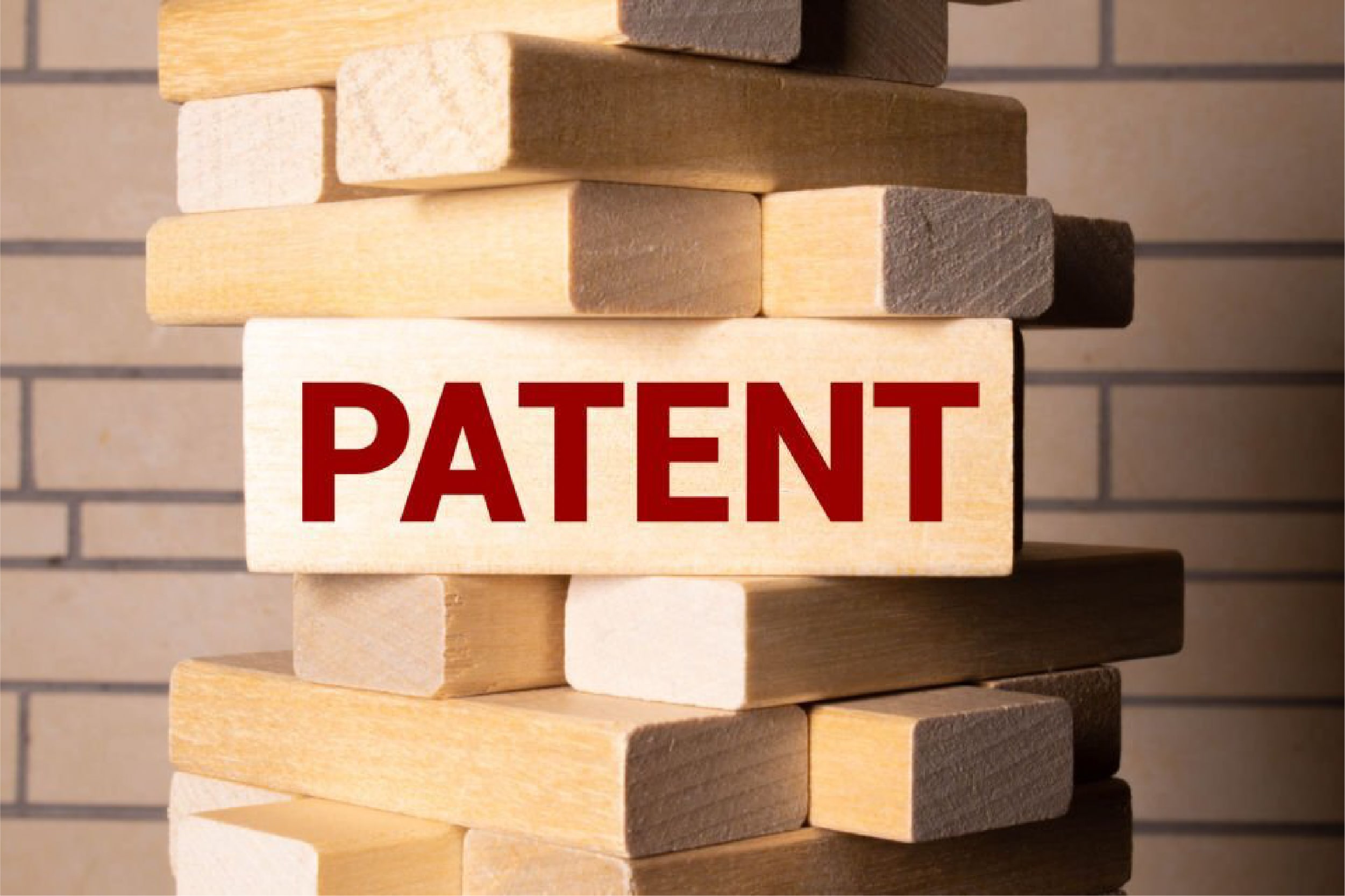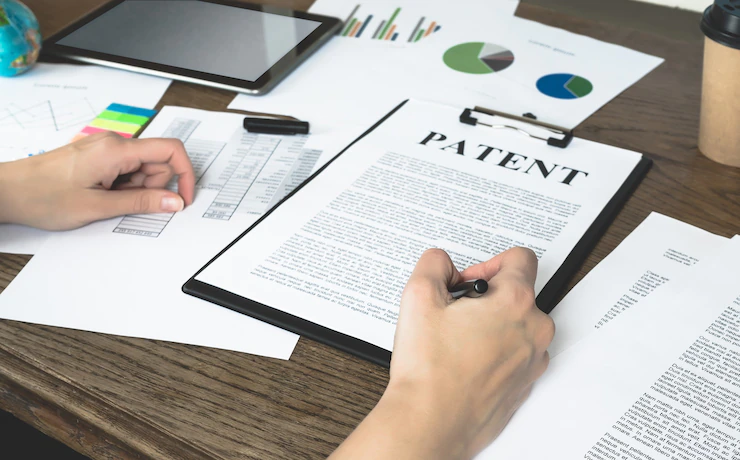
The invention process starts with an idea and then involves the further development of that idea. You can’t patent an idea by itself; you will have to develop it into a prototype and then get it approved before filing a patent application. It is important to understand the difference between an idea and an invention; some people believe that you don’t need to develop your invention into a prototype because your idea is great, but this is not true. When it comes to how to get a patent on an invention, hiring to many questions such as – How to get a patent on an idea? How to get a patent on an Invention? How to get a patent on a product? How to patent a logo?
Getting a patent for your product or idea or invention can be a long and costly process. Here's an overview of how to get a patent on a product so you know what to expect from the process.
Step 1: Verify whether your idea is eligible for a patent, and if so, make an application.
Before you make an expensive investment in the process of patenting your idea or invention, be sure that your idea meets the eligibility requirements for a patent. You can refer to the US Patent and Trademark Office (USPTO) for complete information about its requirements, but here’s a general summary to steer you in the right direction:

- A patent must be novel and non-obvious, meaning that it must be completely new.
- If someone else has already described or patented your idea, then it won't be eligible for patent protection.
- To be considered patentable, an invention must not be obvious or obvious combinations of existing technology.
- A good idea for an invention must be both practical and specific.
- A patent is not available for discoveries that occur naturally.
- The scope of your patent must be defined and cannot include any speculative claims.
Once you have determined that your idea meets the criteria, you can explore further options for patenting it. In the United States, three different types of patents are available:
Utility Patent:
These are the most common type of patent issued. They are granted for inventions of a process, machine, composition of matter or manufacturing system that are new and useful; or for improvements to an existing process.
Design Patent:
These patents protect original concepts for products, including their designs and ornamental features. To obtain a design patent, the design and object must be inseparable. In short, utility patents protect the way an idea works, and design patents protect the way it looks.
Plant Patent:
A plant patent is issued to new and distinctive plants that cannot be reproduced by seeds. Rather than a seed being used, the plant can be propagated through cuttings or grafting. To get a plant patent, the applicant must prove that they have successfully reproduced the plant asexually.
After you verify that the idea is eligible for patent protection, you should run a patent search to ensure there is no existing patent on your idea or any pending applications that are too similar to yours.
Step 2: Have a log of all your ideas and inventions, including their evolution into potentially patentable inventions.
To qualify for a patent, you must be able to show that your idea is unique. This can be done by recording your thought process in a journal or notebook along with any other evidence you have. From raw notes to sketches and corrections, all of this could help defend that you're the one who came up with this new idea.
Step 3: Hire a patent firm.
When it comes to how to get your intellectual property patented, hiring a patent firm is a must. A firm will help you ensure that your idea is patentable—that is, it has enough originality and usefulness to qualify for patent protection—and will also help walk you through the process of filing a patent application. A patent is useless if its owner cannot defend his or her rights in court against someone infringing on the patent. A firm can make sure that the patent application itself is strong enough to withstand legal challenges by other parties
Step 4: Prepare an invention disclosure.
- It is important to educate your staff about how to disclose an invention so that they can operate within the system.
- Ensure that all of your employees are aware of and follow the policy regarding disclosure of inventions. Most companies have a policy that says employees must disclose any inventions made during the course of their employment with that company.
- When investigating a patent application, you must give careful attention to each disclosure of an invention.
- The IP official at your company must be able to explain all IP policies and practices to each inventor.
- It is important to understand the nature and content of the intended publication so that you can determine whether it will contain a disclosure of the invention. One way to do this is to ask each inventor when a publication or abstract might happen.
- A disclosure is made when a company states the details of an invention. Assignment means that the ownership and legal title to the invention have been given to another party.
- Inventors and corporations often collaborate on projects to develop new inventions. These collaborations should be clearly described in a contract, grant, or inter-institutional agreement. The document should address co-inventorship and co-ownership of any intellectual property developed during the term of a project.
Step 5: Conduct a prior art search.
A patent's prior art, also sometimes known as 'state of the art', is a term used to describe all of the information currently available that is relevant to a patent's claims of originality. This can include things such as published and unpublished literature, previous patents and other innovations. When searching for prior art, one must consult with a patent professional to ensure a comprehensive search is done. This can involve hundreds or thousands of references, and many tools must be used in the process. The search must be repeated over time so new developments in the field can be considered."
Step 6: Prepare a patent draft. Read a guide to preparing a patent draft.
The patent drafting process is an important step in the patent application process. The product design or idea that you have come up with might need to be condensed into a claim or a list of claims, before they can be described in detail on paper. Through this detailed description of your invention and ideas, your attorney will help ensure that you are properly defining and proving ownership of the invention.
Step 7: When you file your patent application, make a prototype of it.
Before filing for a patent, you are required to have a prototype or model of your idea prepared. This is something tangible that everyone can see and understand. Ideally, you’d want to show it to investors or potential licensees so that they can better understand the concept behind your patent.
Step 8: Submit an application for a patent with the respective patent office.
Now you need to submit and file the patent application. If you follow each step above, you’ll be ready for this when the time comes. You can always file your patent application on your own through the USPTO website.
Highlights of Patent Rules in US

Before you begin to learn about how to get a patent on an invention, you must be aware of the rules and requirements in the US. Before you begin to learn about how to get a patent on an invention, you must be aware of the patent rules and requirements in the US. We will discuss the highlights of the patent rules & requirements in the US to make them more accessible for you. You will learn what to do when preparing your application including drafting a specification and claiming priority along with making disclosures. which are summarized below:
Patentable Subject Matter:
There are two criteria for subject matter eligibility:
1. Your invention must fall in one of the four categories:
- Processes,
- Machines,
- Manufactures and
- Compositions of matter.
A process defines method steps of activity while machine, manufacture, and composition of matters typically cover products.
2. There are also a few exceptions for which a patent may not be allowed, such as abstract ideas, laws of nature, and natural phenomena.
Conditions for Patentability

1. Useful
If you have a useful invention or improvements that qualify the subject matter eligibility criteria, you may obtain a patent. When determining the usefulness of your invention, one question you must ask yourself is: "Is it a solution to an existing problem?" Any invention with a functional and conceivable use satisfies this criterion.
2. Novelty
There must not exist a prior art which completely discloses the invention. The invention should not be part of public knowledge. If the solution to a problem you wish to file a patent is already in a published document or use, you may not obtain a patent.
3. Non-Obvious
As mentioned, your invention must be novel in the light of prior art, but it also must not be obvious to a person ordinary skilled in the art. It should not be an apparent improvement to an existing solution to a person who has some knowledge in the field of invention.
Types of Patent Applications
There are two types of utility patent applications that one can file with USPTO:
1. Non-provisional Patent Application: A Non-provisional patent application is an ordinary, regular, and formal patent application. The patent application undergoes an examination process, leading to a granted patent. You need to disclose your invention completely in this application.
2. Provisional Patent Application: A provisional patent is an initial disclosure, and you can claim that you conceived the idea on the date of applying. However, you may need some more time to disclose the invention completely. You must file a corresponding non-provisional patent application within twelve months of filing a provisional patent application. A provisional patent application helps you secure an early filing date of your application.